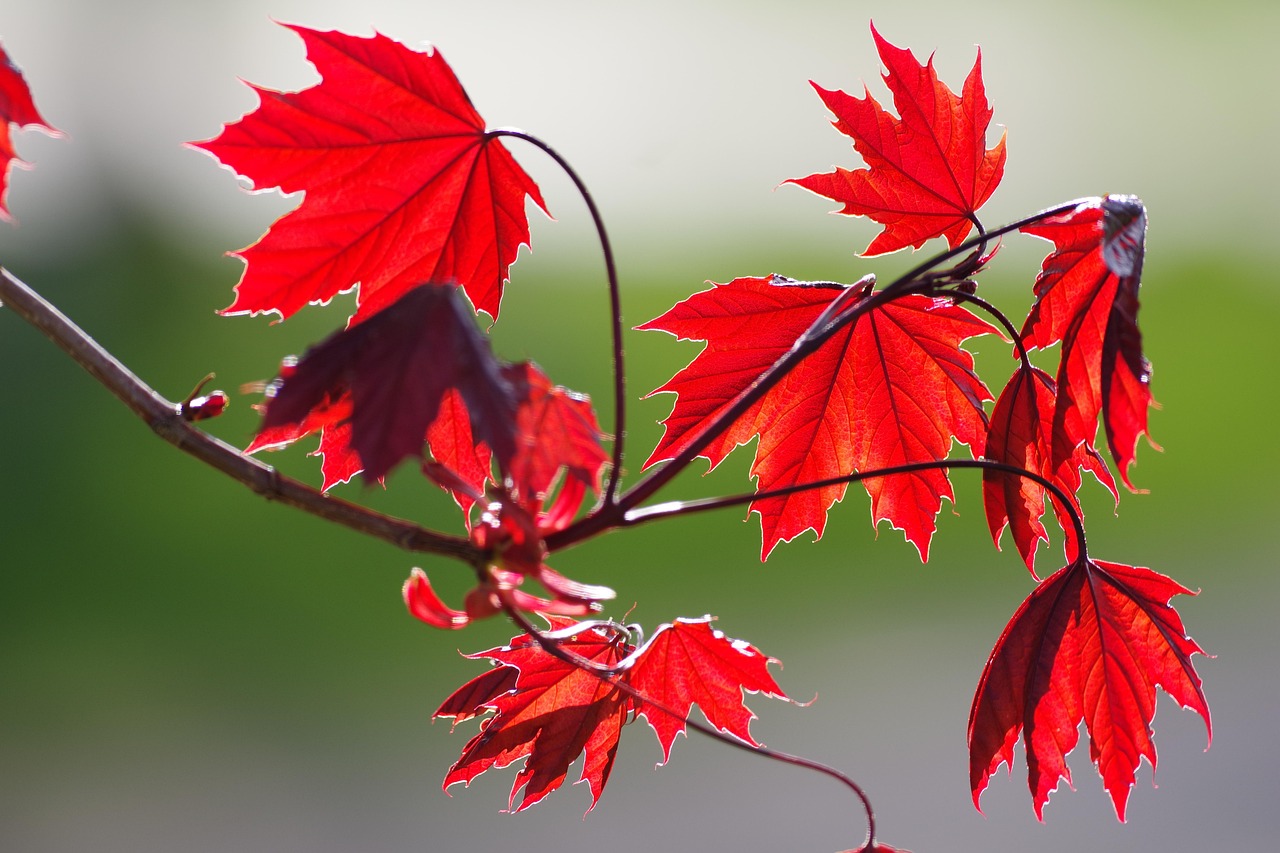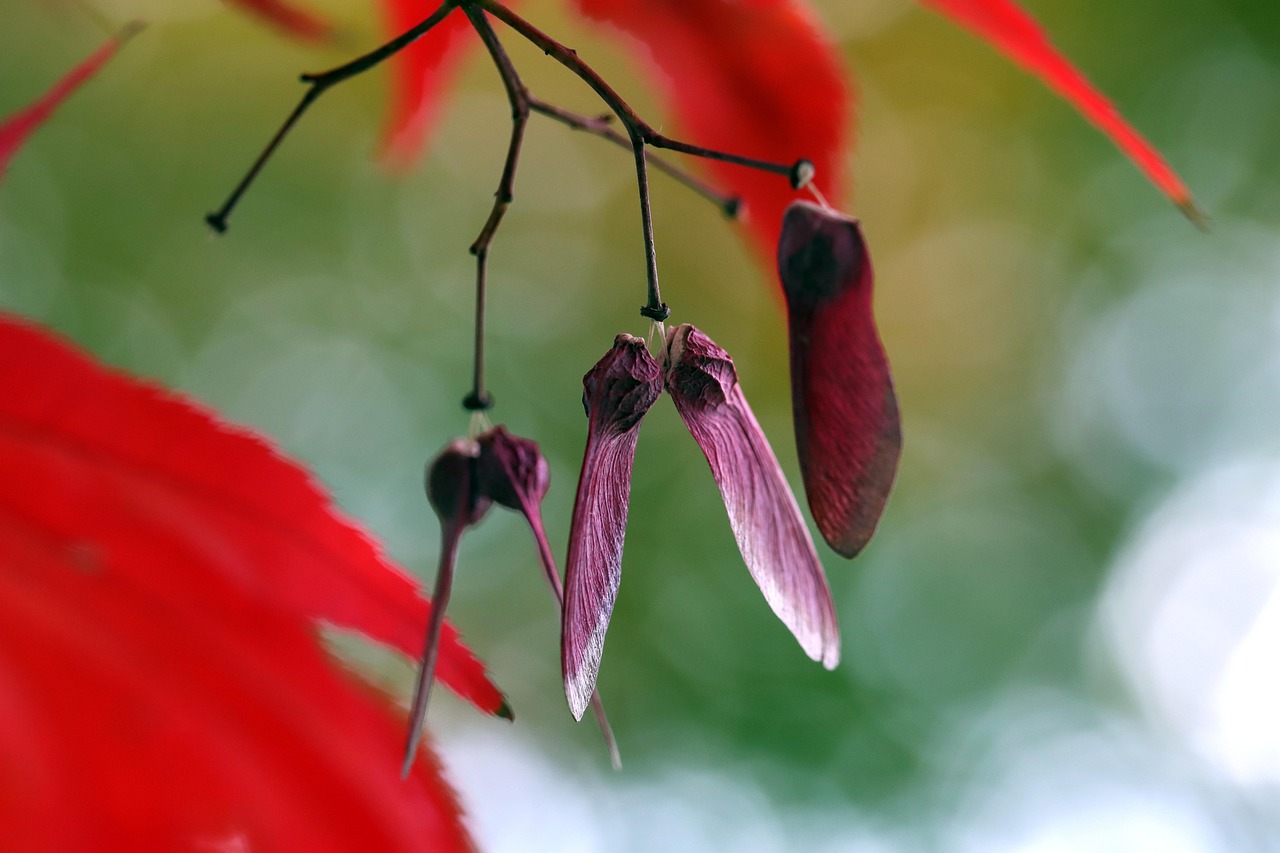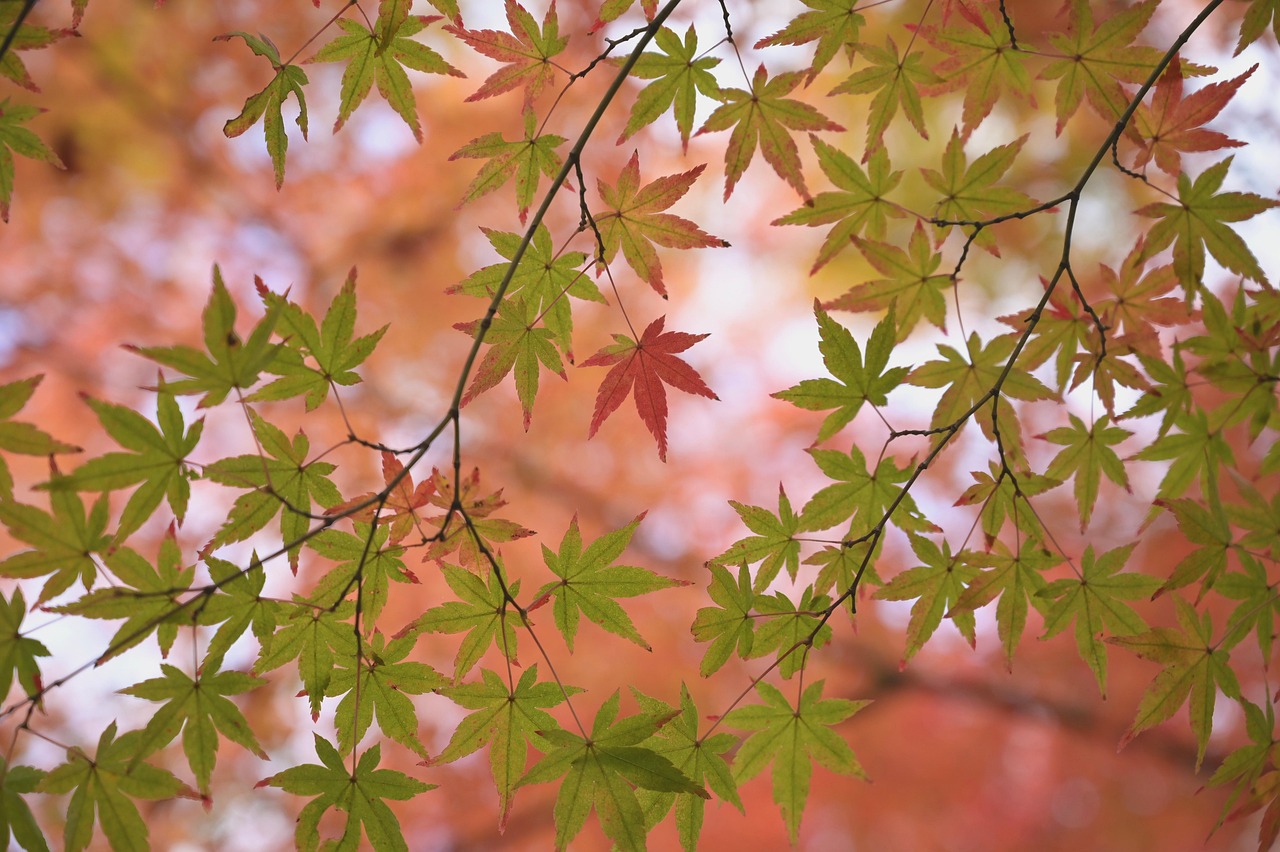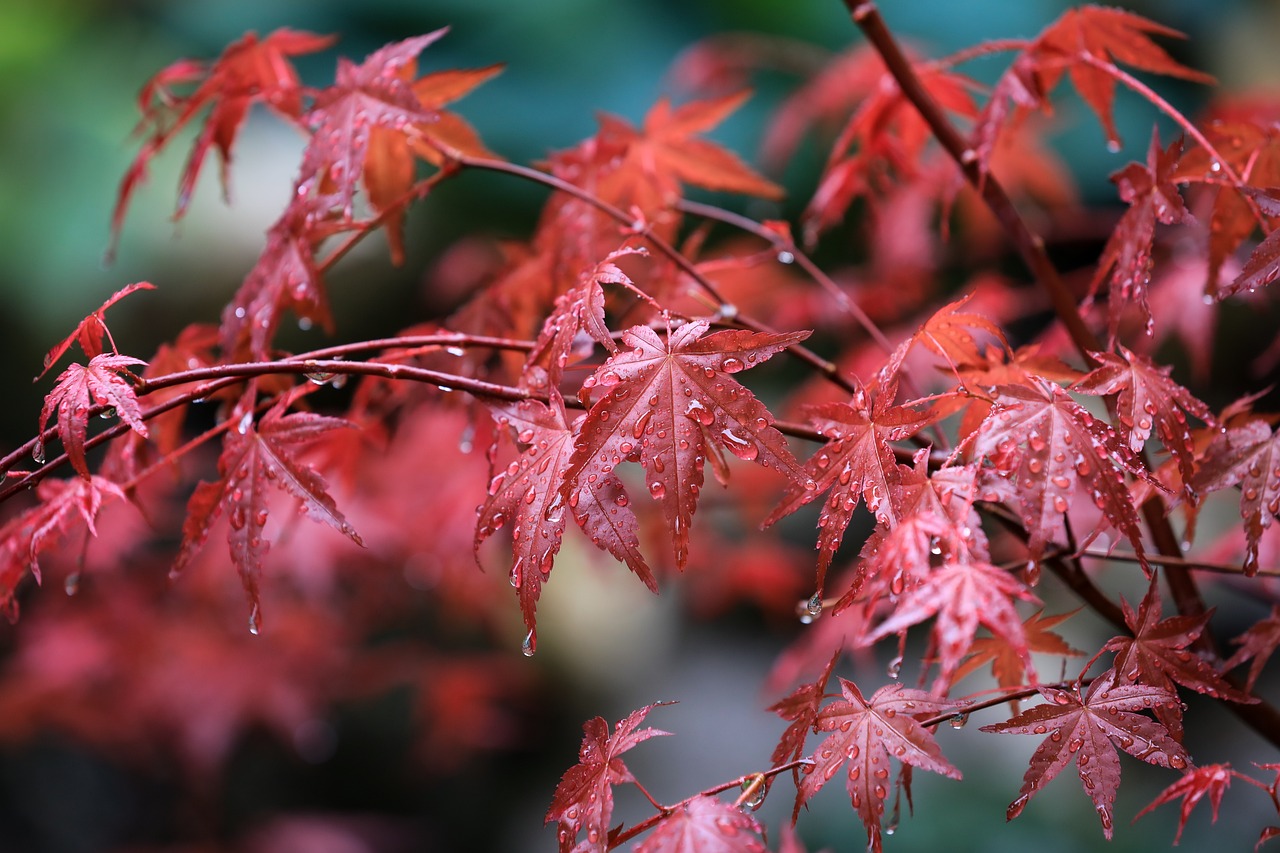The red maple (Acer rubrum) originated in North America, specifically in the eastern and central regions of the United States and Canada. This tree species thrives in diverse habitats, ranging from wetlands to upland forests.
Understanding the Red Maple

The red maple is one of the most common and widely distributed trees in North America. Its striking fall foliage, vibrant red flowers in spring, and adaptability to various environments make it a popular choice for landscaping and forestry. Beyond its aesthetic appeal, the red maple plays a significant ecological role in its native habitats.
This tree species can be found in a variety of settings, which contributes to its resilience and ability to thrive in different soil types and moisture levels. Red maples are often seen in swamps, along streams, and in low-lying areas, but they can also grow in drier upland sites. This adaptability has allowed them to become a dominant species in many regions.
Habitat and Distribution
The red maple prefers moist, acidic soils but can tolerate a wide range of conditions. It can grow in both full sunlight and partial shade, making it versatile in terms of habitat. The tree’s natural range extends from southern Maine to northern Florida and westward to eastern Texas and southern Missouri. Understanding its distribution helps in appreciating the ecological significance of this species.
- Native Range: Eastern and Central United States
- Common Habitat: Wetlands, floodplains, and upland forests
- Soil Preference: Moist, acidic soils
- Sunlight Requirements: Full sun to partial shade
Physical Characteristics
The red maple typically reaches heights of 40 to 60 feet, with some specimens growing even taller. The tree has a broad crown that provides ample shade, making it a favorite among homeowners and city planners alike. Its bark is smooth and gray when young but becomes darker and furrowed with age.
One of the most notable features of the red maple is its leaves. They are simple, palmate-lobed with serrated edges, and can measure up to 5 inches long. During autumn, they transform into brilliant shades of red, orange, and yellow, creating stunning displays that attract nature lovers and photographers.
| Characteristic | Description |
|---|---|
| Height | 40 to 60 feet |
| Bark | Smooth gray when young, darker with age |
| Leaves | Palmate-lobed, serrated edges, up to 5 inches long |
| Fall Color | Brilliant red, orange, and yellow |
Ecological Significance
The red maple plays a crucial role in its ecosystems. It provides food and habitat for various wildlife species. Birds and mammals feed on its seeds and buds, while many insects find shelter among its branches. The tree’s ability to thrive in wetland areas also helps stabilize soil and prevent erosion.
Moreover, red maples are essential for maintaining biodiversity. They serve as important hosts for several species of moths and butterflies. Their presence contributes to healthy forest dynamics by supporting a wide range of flora and fauna.
Cultural Importance
The red maple holds cultural significance as well. This tree is recognized as the state tree of Rhode Island and is a symbol of New England’s natural beauty. Its wood is valued for its strength and workability, making it suitable for furniture and cabinetry.
In addition to its practical uses, the red maple has inspired artistic representations throughout history. Its vibrant colors in fall have made it a subject of countless paintings, photographs, and literary references.
Growth and Reproduction of the Red Maple
The growth cycle of the red maple is fascinating and integral to its survival and spread. Understanding how this tree reproduces and grows helps appreciate its adaptability and resilience in various environments. The red maple typically begins producing seeds when it reaches around 10 years of age, allowing for rapid population expansion in suitable habitats.
Seed Production
Red maples produce small, winged seeds that are dispersed by the wind. This method of seed dispersal allows the tree to colonize new areas effectively. The seeds usually mature by late spring, and their lightweight structure enables them to travel far from the parent tree.
The timing of seed production can vary based on environmental conditions, but generally, the trees produce seeds annually. This consistent production ensures that there is a continuous supply for potential germination.
Germination and Growth Stages
Once the seeds land in a suitable environment, germination occurs. The ideal conditions for germination include:
- Moist soil
- Partial to full sunlight
- Moderate temperatures
After germination, young red maple seedlings grow quickly, leveraging available sunlight and nutrients. The growth stages include:
- Seedling Stage: The first few years of life, where the young plant develops a strong root system.
- Juvenile Stage: Rapid growth occurs, and the tree starts to develop its characteristic leaves and branches.
- Mature Stage: The tree reaches its full height and begins to reproduce.
Environmental Preferences
The red maple thrives in a variety of environments, which contributes significantly to its widespread distribution. Its preferences for soil type, moisture levels, and light conditions make it a resilient species.
Soil Conditions
The red maple prefers moist, well-drained soils that are rich in organic matter. However, it can tolerate a range of soil types, from sandy loams to heavy clay. Its adaptability allows it to survive in both acidic and neutral pH soils.
This versatility is crucial, especially as climate conditions change. Red maples can survive periodic flooding, making them suitable for wetland restoration projects.
Moisture Requirements
Red maples are particularly known for their affinity for wet environments. They often grow in:
- Swamps
- Floodplains
- Marshes
Despite their preference for wet conditions, red maples can also thrive in drier areas, provided there is adequate moisture during the growing season. Their ability to adapt to varying moisture levels sets them apart from many other tree species.
Pests and Diseases
Like all trees, the red maple faces threats from various pests and diseases. Understanding these risks is essential for maintaining healthy populations of this species.
Common Pests
The most common pests that affect red maples include:
- Aphids: These small insects can weaken trees by sucking sap and may lead to sooty mold growth.
- Maple Leafcutter: This pest can cause significant damage by cutting out circular sections of leaves.
- Scale Insects: These pests attach themselves to branches and leaves, draining vital nutrients from the tree.
Diseases
Red maples are susceptible to several diseases, including:
- Verticillium Wilt: A soil-borne fungus that causes leaf wilting and yellowing.
- Canker Diseases: Caused by various fungi, these cankers lead to sunken areas on the bark and may kill branches or entire trees.
- Root Rot: Often associated with overly saturated soils, this disease can be fatal if not addressed promptly.
Regular monitoring and proper management practices can help mitigate these threats and ensure healthy growth of red maples in their natural habitats.
Uses of the Red Maple
The red maple is not only significant ecologically but also serves various practical purposes in human society. Its wood, aesthetic appeal, and role in landscaping highlight its importance beyond just being a native tree species.
Wood Utilization
The wood of the red maple is prized for its hardness and workability. It is used in various applications, such as:
- Furniture: Its attractive grain makes it ideal for crafting furniture pieces.
- Cabinetry: Many cabinets feature red maple due to its durability and fine finish.
- Flooring: Red maple flooring provides an elegant look while being resilient against wear and tear.
Lanscaping and Urban Forestry
The red maple is a popular choice in urban settings due to its fast growth and tolerance of different environmental conditions. Landscapers often choose this tree for:
- Shade trees in parks and playgrounds
- Boulevard plantings along streets
- Ornamental planting in residential backyards
This versatility not only enhances aesthetic appeal but also contributes to urban ecology by providing shade, reducing heat islands, and improving air quality.

Threats to the Red Maple Population
Despite its resilience, the red maple faces several threats that can impact its population and health. Understanding these threats is essential for conservation efforts and ensuring the sustainability of this important tree species.
Climate Change
Climate change poses a significant risk to the red maple and its habitats. Changes in temperature and precipitation patterns can affect its growth and reproductive cycles. Some potential impacts include:
- Altered Growing Seasons: Warmer temperatures may lead to earlier leaf emergence and flowering, which can disrupt the tree’s synchronization with pollinators.
- Increased Drought: Extended periods of drought can stress red maples, especially in areas where they are not typically found.
- Shifts in Habitat: As climate conditions change, the suitable habitats for red maples may also shift, forcing them to migrate or adapt to new environments.
Invasive Species
Invasive species can have detrimental effects on native flora, including red maples. These non-native plants and pests often outcompete native species for resources. Key invasive threats include:
- Asian Longhorned Beetle: This pest can cause severe damage by boring into the wood of the tree, leading to structural weakness and potential death.
- Japanese Knotweed: This invasive plant can quickly dominate an area, overshadowing young red maple seedlings and restricting their growth.
- Emerald Ash Borer: While it primarily affects ash trees, the stress from its presence can affect overall forest health, indirectly impacting neighboring species like the red maple.
Propagation and Conservation Efforts

Conserving red maple populations involves various strategies, including propagation and habitat restoration. These efforts aim to ensure that this tree continues to thrive in its natural environments.
Propagation Techniques
Red maples can be propagated through several methods, including:
- Seed Collection: Collecting seeds in late spring allows for natural germination or planting in controlled settings.
- Cuttings: Taking cuttings from healthy trees can help propagate new plants, allowing for quicker establishment in desired areas.
- Grafting: This method enables the combination of desirable traits from different trees, enhancing growth or disease resistance.
Habitat Restoration
Restoring habitats where red maples grow is crucial for their long-term survival. Effective restoration practices include:
- Removing Invasive Species: Controlling invasive plants and pests helps create a healthier environment for red maples to grow.
- Reforestation: Planting red maples in areas where they have been lost can help restore ecosystems and improve biodiversity.
- Monitoring Ecosystems: Regularly assessing forest health allows for timely interventions to protect against emerging threats.
Cultural Significance and Folklore
The red maple is not only valued for its ecological role but also holds cultural significance across various communities. Its presence in folklore, art, and traditions showcases its importance beyond the natural world.
Folklore and Symbolism
Throughout history, the red maple has been associated with various cultural meanings. Some examples include:
- Symbol of Strength: The resilience of the red maple has made it a symbol of strength in many Native American cultures.
- Seasonal Change: Its vibrant fall colors represent the transition between seasons, evoking themes of change and renewal.
- Cultural Identity: The red maple is often featured in art and literature, representing regional pride, particularly in New England.
Artistic Representations
The striking appearance of the red maple has inspired countless artists and creators. Its seasonal changes provide a rich palette for artistic expression. Some notable influences include:
- Painters: Artists often depict red maples in landscapes, highlighting their vibrant fall foliage.
- Photographers: The tree’s stunning colors attract photographers who capture its beauty throughout the seasons.
- Literature: The red maple appears in poetry and stories as a symbol of nature’s beauty and endurance.
The Future of the Red Maple
The future of the red maple depends on ongoing conservation efforts, public awareness, and a commitment to preserving natural habitats. By understanding the challenges this species faces and promoting sustainable practices, we can ensure that future generations enjoy the beauty and benefits of the red maple.
It is vital for communities, conservationists, and policymakers to work together. Through education programs, community involvement, and habitat protections, we can foster a greater appreciation for this remarkable tree species. Continued research into its ecology will also play a critical role in adapting to future environmental changes.
The red maple serves as a reminder of the interconnectedness of our ecosystems. Preserving its populations not only benefits the tree itself but also helps maintain the health of broader ecosystems that rely on it.
Importance of Community Engagement

The role of community engagement in the preservation and appreciation of the red maple cannot be overstated. Local communities can play a pivotal role in conservation efforts by actively participating in educational programs and restoration projects. Here are some effective strategies for fostering community involvement:
- Educational Workshops: Organizing workshops on the ecology and benefits of red maples can help raise awareness about their importance. These workshops can include tree identification, proper planting techniques, and the ecological significance of native trees.
- Volunteer Planting Days: Engaging community members in tree planting events helps to restore local habitats while fostering a sense of ownership and pride in the environment.
- Citizen Science Projects: Encouraging residents to participate in monitoring local red maple populations can provide valuable data while increasing public interest in conservation.
Such initiatives not only help protect the red maple but also strengthen community ties. By working together towards a common goal, communities can develop a deeper appreciation for their natural surroundings.
Research and Technology in Conservation
Advancements in research and technology are increasingly playing a crucial role in the conservation of red maples. Scientists and conservationists are utilizing various methods to enhance the understanding of this tree species and its environment. Some key areas of focus include:
- Genetic Studies: Research into the genetic diversity of red maples can help identify resilient populations that may adapt better to changing environmental conditions.
- Remote Sensing: Technologies such as satellite imagery can track changes in forest cover, helping to monitor red maple habitats over large areas.
- Climate Modeling: Predictive models can assess how shifting climate patterns may impact red maple distribution and health, informing future conservation strategies.
By integrating scientific research with practical applications, conservationists can develop more effective methods to safeguard the future of the red maple and its ecosystems.
Global Perspective on Maple Trees
While the red maple is native to North America, it is part of a broader family of maple trees that spans across different continents. Understanding this global perspective can enhance appreciation for the diversity within the genus Acer. Some notable species include:
- Sugar Maple (Acer saccharum): Known for its sweet sap used in maple syrup production and stunning fall colors, this species is also found primarily in North America.
- Japanese Maple (Acer palmatum): Valued for its ornamental qualities, this species is popular in gardens and landscapes worldwide.
- Norway Maple (Acer platanoides): Native to Europe, this tree has been widely planted in North America but is considered invasive in some areas.
This diversity highlights the ecological importance of protecting not just the red maple but also other maple species globally. Each species plays unique roles within their ecosystems, contributing to overall biodiversity.
Final Thoughts
The red maple stands as a vital component of North America’s natural heritage. Its history, ecological significance, and cultural impact underscore its importance in both urban and rural landscapes. By understanding where the red maple originated and how it thrives, we gain insight into the broader implications of environmental stewardship.
As we face challenges such as climate change, habitat loss, and invasive species, it becomes increasingly clear that proactive measures are necessary to protect this iconic tree. Collaborative efforts among communities, conservationists, scientists, and policymakers are essential to ensure that future generations can experience the beauty and benefits of red maples.
The appreciation for the red maple extends beyond its physical presence; it symbolizes resilience, adaptation, and the interconnectedness of life. Through education, engagement, and commitment to conservation, we can foster a sustainable future for this remarkable tree and the ecosystems it supports. The journey toward preserving the red maple is a shared responsibility that requires collective action and dedication.
